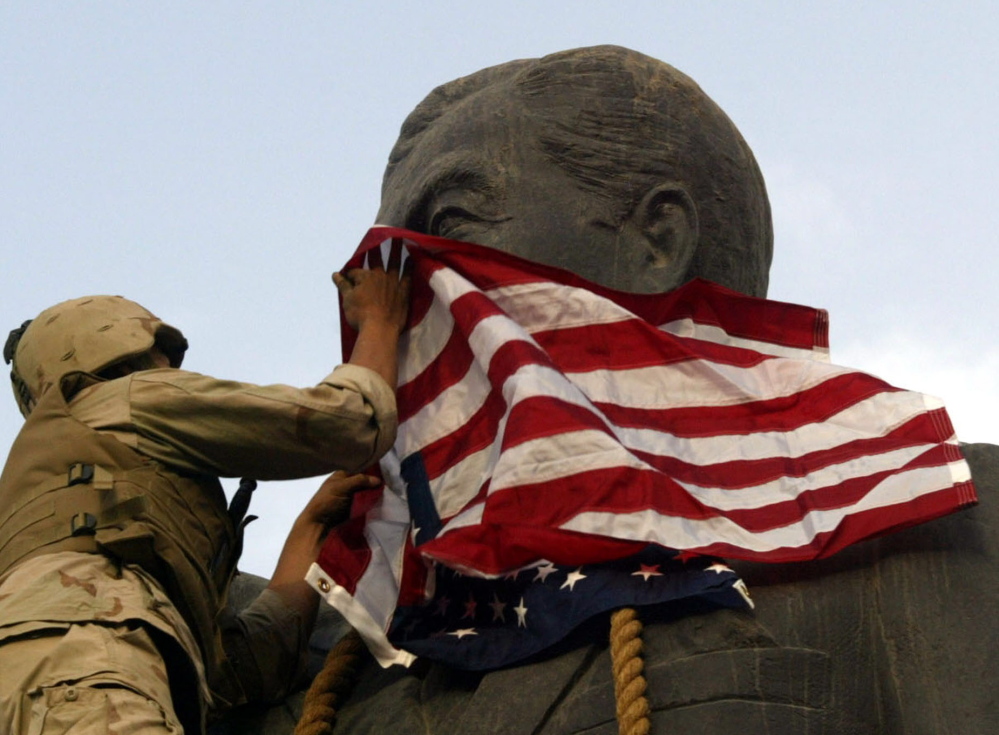It is an image seared in the minds of war-ready and war-weary Americans alike. Just weeks after the invasion of Iraq, American armored vehicles bore down on Firdos Square in downtown Baghdad, where an emboldened man had already taken a sledgehammer to the base of a statue of Saddam Hussein.
That man, Kadhim Sharif al-Jabouri, had once repaired the Hussein family’s motorcycles, but was also imprisoned by Saddam after falling out of favor. He says that 14 or 15 members of his family were executed by Saddam’s regime.
In an interview aired Tuesday by the BBC, more than 13 years after the invasion, Jabouri speaks of his longing for the relative peace of the years before it.
“Now, when I go by that statue, I feel pain and shame. I ask myself, why did I topple that statue?” said Jabouri. The toppling of the statue became the iconic image of the beginning of the invasion.
Iraq is yet to fully emerge from the bloodbath the invasion precipitated. And early Sunday morning, the Islamic State group terrorized Baghdad once again with the deadliest single bombing since the year the invasion began: 2003. More than 200 were killed as they shopped for gifts for the upcoming Eid holiday, marking the end of the holy month of Ramadan.
The shopping mall was in Karrada, a neighborhood just down the road from Firdos Square, where the statue Saddam had built for himself for his 65th birthday once stood.
The Islamic State still controls large portions of northern Iraq, though it has been beaten back lately by Iraqi forces, most notably in Fallujah. Both the Islamic State and the American invasion and subsequent U.S.-backed Shiite-led governments, have exacerbated sectarian divisions. Before Sunday’s bombing, there had already been seven that killed more than 30 people this year.
Jabouri now lives in Beirut, along with more than 1 million refugees from Iraq, Syria and Palestine
He blames the current situation squarely on the Iraqi government. After the American invasion, he says things got worse every year.
“There was corruption, infighting, killing, looting. Saddam killed people, but it was nothing like this current government,” he said. “Saddam is gone, but in his place there are 1,000 Saddams.”
Copy the Story LinkSend questions/comments to the editors.



Success. Please wait for the page to reload. If the page does not reload within 5 seconds, please refresh the page.
Enter your email and password to access comments.
Hi, to comment on stories you must . This profile is in addition to your subscription and website login.
Already have a commenting profile? .
Invalid username/password.
Please check your email to confirm and complete your registration.
Only subscribers are eligible to post comments. Please subscribe or login first for digital access. Here’s why.
Use the form below to reset your password. When you've submitted your account email, we will send an email with a reset code.